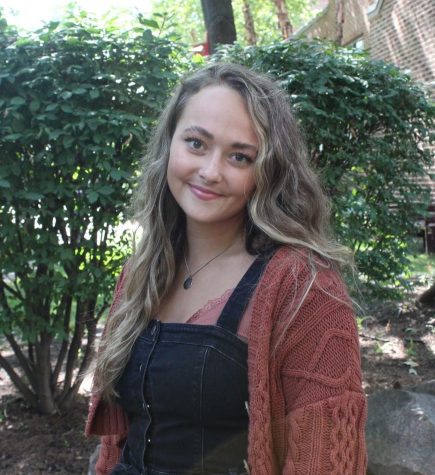Gannon alumni publish prose and poetry book
’A Moment in Time’ is an honest conversation that speaks volumes
Nicholas Fagen’s vulnerable collection of poetry and prose was craftfully illustrated by 2019 alumna Maria Hays.
February 16, 2022
Two Gannon University alumni have recently added to the school’s list of published authors with “A Moment in Time;” a collection of poetry and prose work from writer Nicholas Fagan and illustrator Maria Hays.
Both graduated from Gannon with English degrees, Fagan in 2017 and Hays in 2019.
As suggested in his Amazon synopsis of the book, this has been quite the journey for Fagen. The narrative has taken him 27 years to complete, but it was well worth the wait.
Upon receiving the book and taking in the first couple of pages, I was instantly reminded of the Gannon Totem, which is also a compilation of art, poetry and prose.
Actually, as art editor for the Totem, I’ve been inspired by Hays’ illustrative work for the book to attempt to incorporate the same concept into the 2022 Totem.
Truthfully, these poetic works are emotionally heavy and vulnerable for Fagen, but this content is broken up by fun outline illustrations and a handful of silly poems like “Ode to Cheeseburger,” which was sure to evoke a giggle from me.
This collection of works clearly grew as Fagen did, and in that sense was very relatable to read as a college student faced with all of the certain opportunity and hardship set before me.
Themes are of healing and heartbreak and pain and growth, a lot of which can be a universal experience.
One of my favorite works was “I (hate to admit but I) don’t like thinking about you.”
Not only does this title speak truth to the chaos that is grieving a relationship and transforming the pain for purpose, but this only becomes more true and more intense as the stanzas unfold.
It speaks to losing yourself, and control of your thoughts and emotions, and finding it again, perhaps in a better state by the end. Fagen characterizes this conclusion as “blissful,” which describes to a T the journey the poem takes you on.
Although I tend to favor poetry over prose, I did enjoy the work Fagen put into his works.
One that interested me is “Anger’s Journal,” which as suggested by the title, was narrated by anger itself, which sometimes can seem to have a mind of its own. The story describes just how encapsulating anger can be, and how it can hold so much control over the person it embodies.
Overall, I am impressed with Fagen’s vulnerability and commitment to the exposition of this pain and the sharing of these experiences, as I know it certainly spoke to me.
This work inspires me to follow Fagen’s model, as he encourages the reader with his closing note and blank pages to end his book.
“These pages are for you, reader. A dedicated space to explore your creativity and vulnerability. Hopes and dreams of the past and present. Anticipations of the future. Memories of infinite bliss. Smile! There is always more to come. Always,” Fagen wrote.
ALI SMITH






